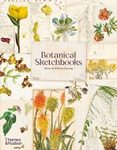![Frankia Symbiosis Frankia Symbiosis]()
Click to have a closer look
About this book
Contents
Customer reviews
Related titles
About this book
The 12th meeting on Frankia and Actinorhizal Plants that took place in Carry-le-Rouet, France in June 2001, was the opportunity for scientists to communicate about latest developments on this symbiosis that concerns a wide range of dicotyledonous plants, initiates ecological successions and is used in a number of countries to protect crops from winds or improve soil status.
Contents
1. Introduction. 2. Frankia inoculation, soil biota, and host tissue amendment influence Casuarina nodulation capacity of a tropical soil; J.F. Zimpfer, et al. 3. An assessment of soil enrichment by actinorhizal N2 fixation using delta15N values in a chronosequence of deglaciation at Glacier Bay, Alaska; S.J. Kohls, et al. 4. Effects of land irrigation with partially-treated wastewater on Frankia survival and infectivity; W.F. Sayed. 5. The production and utilisation of monoclonal antibodies for identification of a Frankia strain utilised as inoculum for Casuarina equisetifolia; A. Hahn, et al. 6. The effects of fire on soil nitrogen associated with patches of the actinorhizal shrub Ceanothus cordulatus; B.B. Oakley, et al. 7. Alder and lupine enhanced nitrogen cycling in a degraded forest soil in Northern Sweden; D.D. Myrold, K. Huss-Danell. 8. Germination and physiological properties of Frankia spores; G.D. Krumholz, et al. 9. Improving dispersed growth of Frankia using Carbopol; O.T. Harriott, A. Bourret. 10. Identification and expression studies of a catalase and a bifunctional catalase-peroxidase in Frankia strain R43; F. Tavares, et al. 11. Effect of electroporation conditions on cell viability of Frankia EuI1c; A.K. Myers, L.S. Tisa. 12. Molecular cloning and characterization of adr and ivd genes from Frankia EuIK1 strain; H.J. Kwon, et al. 13. Cloning, characterization and phylogenic analysis of the sigA s70 factor gene sequence from the actinomycete Frankia; D. Blaha, B. Cournoyer.14. An insertion sequence unique to Frankia strain ArI5; T.R. John, et al.15. Genomic fingerprinting of Frankia strains by PCR techniques. Assessment of a primer based on the sequence of 16S rRNA gene of Escherichia coli; J.M. Igual, et al. 16. Progress on the genetics of the N2-fixing actinorhizal symbiont Frankia; C. Lavire, B. Cournoyer. 17. Ammonium assimilation in root nodules of actinorhizal Discaria trinervis. regulation of enzyme activities and protein levels by the availability of macronutrients (N, P and C); C. Valverde, L.G. Wall. 18. The regulation of nodulation, nitrogen fixation and ammonium assimilation under a carbohydrate shortage stress in the Discaria trinervis-Frankia symbiosis; C. Valverde, L.G. Wall. 19. Seasonal flooding regimes influence survival, nitrogen fixation, and the partitioning of nitrogen and biomass in Alnus incana spp. rugosa; C.M. Kaelke, J.O. Dawson. 20. Tripartite associations in an alder: effects of Frankia and Alpova diplophloeus on the growth, nitrogen fixation and mineral acquisition of Alnus tenuifolia; T. Yamanaka, et al. 21. Nodulation potential of soils from red alder stands covering a wide age range; K.J. Martin, et al. 22. A possible role for phenyl acetic acid (PAA) on Alnus glutinosa nodulation by Frankia; Y. Hammad, et al. 23. Molecular phylogeny of Alnus (Betulaceae), inferred from nuclear ribosomal DNA ITS sequences; E. Navarro, et al. 24. Evolutionary implications of nucleotide sequence relatedness between Alnus nepalensis and Alnus glutinosa and also between corresponding Frankia microsymbionts; R. Varghese, et al. 25. Choosing a reporter for gene expression studies in transgenic actinorhizal plants of the Casuarinaceae family; C. Santi, et al. 26. Expression pattern of ara12*, an Arabidopsis homologue of the nodule-specific actinorhizal subtilases cg12/ag12; S. Svistoonoff, et al.
Customer Reviews















































